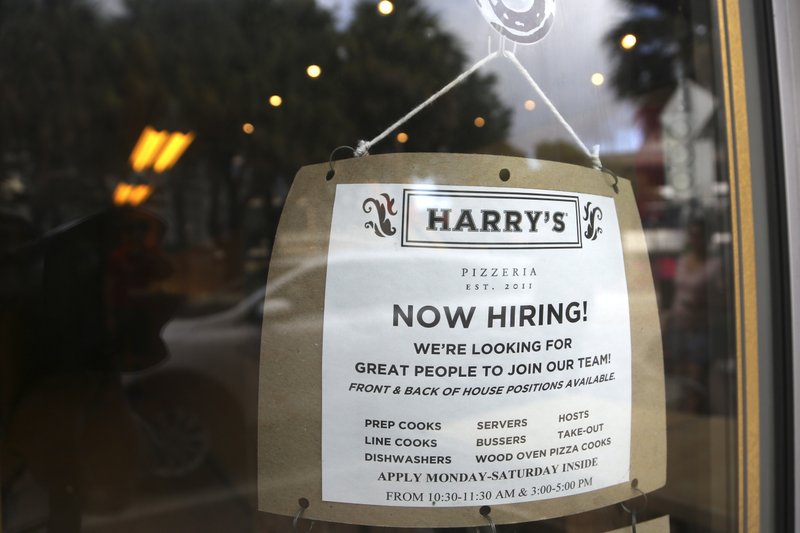WASHINGTON -- The number of available jobs fell sharply in November, dropping to 6.8 million, a decline of 7.6% from the October level.
The Labor Department reported Friday that the job openings number for November was down by 561,000 from the October level of 7.36 million, the lowest since February 2018, according to the department's Job Openings and Labor Turnover Survey. Openings have steadily declined since a 2018 peak of 7.63 million.
Some economists took the big decline as a sign that the labor market may be slowing after strong job growth over the past few years has pushed the unemployment rate down to the lowest level in a half-century.
"The labor market may be starting to lose its shine as companies have scaled back their hiring in the face of continued economic uncertainty in this longest economic expansion in history," said Chris Rupkey, chief financial economist at MUFG in New York.
The report on job openings was for November. The government's more current unemployment report for December, released last week, showed that employers created 145,000 jobs last month. That was a decline from a robust increase of 256,000 jobs in November.
For all of 2019, employers added an average of 175,000 jobs per month, down from an average gain of 223,250 jobs per month in 2018.
For December, the unemployment rate held steady at a five decade low of 3.5% where it has been for three of the past four months. That is the lowest level since 1969.
The Friday report showed that hires totaled 5.8 million in November, The number of separations from jobs, which includes people leaving to get better jobs, totaled 5.65 million, basically unchanged from October.
The drop in open positions is consistent with moderation in both the job market and the economy.
Nonetheless, openings continue to exceed the number of unemployed as the tight labor market makes it difficult to find experienced workers. Labor shortages are also evident in lower-wage industries, which has prompted employers to offer higher pay.
Total vacancies exceeded the number of unemployed by just under 1 million in November, the report showed.
Although it lags a month behind other Labor Department data, the job openings and turnover report adds context to the monthly employment figures by measuring dynamics such as resignations, help-wanted ads and hiring.
Separately, U.S. consumer sentiment remained elevated in January as record stock prices and a strong job market buoyed Americans, suggesting spending will continue its steady gains.
The University of Michigan's preliminary sentiment index for January edged down to 99.1 from a seven-month high of 99.3 in December, data showed Friday. The benchmark value of 100 was set in December 1966. The gauge of current conditions increased slightly to 115.8 while the expectations index ticked down to 88.3
Relatively strong sentiment signals consumers are positioned to help drive the record-long economic expansion even as business investment remains sluggish. At the same time, it's the first decline since August, suggesting growth will remain moderate at the start of 2020 after cooling at the end of last year.
The measure of Americans' expectations for inflation five to 10 years out rose to 2.5% from a record-low 2.2%. The Federal Reserve closely monitors this measure, and policy makers have signaled they will hold interest rates steady following last year's three cuts in part to keep price gains rising toward their 2% goal.
Other reports this week showed retail sales excluding autos climbed in December by the most in five months, while housing starts surged to a 13-year high. A trade truce between the U.S. and China may support sentiment following an escalating tariff battle over the past two years that has at times whipsawed confidence.
The Michigan data compare with a 19-year high in the weekly Bloomberg Consumer Comfort Index. The Conference Board's confidence gauge fell in December for the fourth time in five months, though is still elevated by historical standards.
Consumer expectations for inflation in the coming year rose to 2.5% from 2.3% in the prior month.
Information for this article was contributed by Martin Crutsinger of The Associated Press and by Vince Golle, Scott Lanman, Alex Tanzi and Chris Middleton of Bloomberg News.
Business on 01/18/2020
